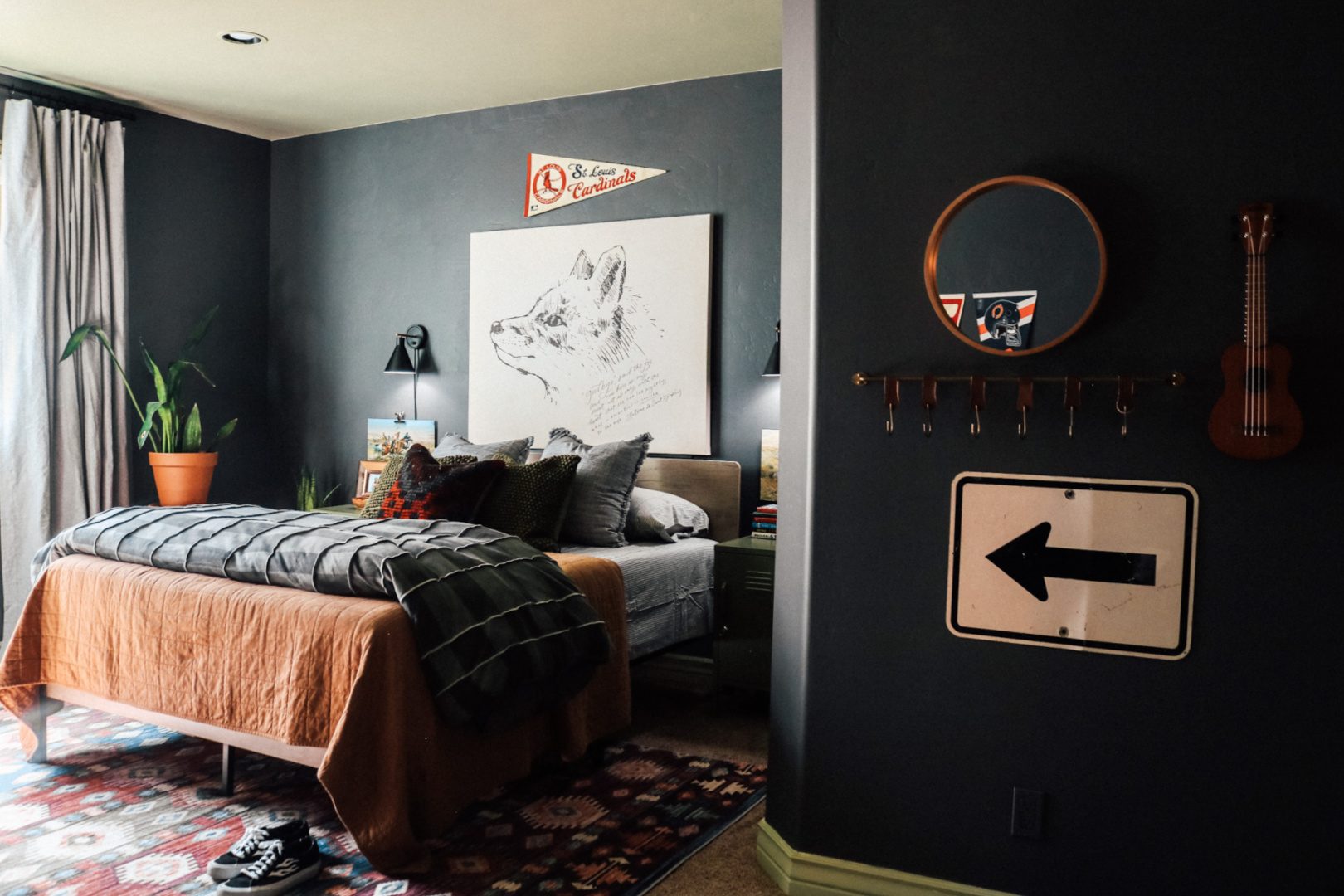The art of designing a teenager’s bedroom transcends mere aesthetics; it’s about creating a multifaceted sanctuary that nurtures independence while fostering creativity and personal growth.
As adolescents navigate through their transformative years, their bedroom metamorphoses from a simple sleeping space into a private retreat where they can study, socialize, and express their burgeoning individuality.
The contemporary approach to designing a teenage boy’s bedroom requires a delicate equilibrium between functionality and personal style, ensuring the space remains adaptable to their evolving interests and needs.
Creating the perfect teenage boy’s bedroom involves careful consideration of various elements, from storage solutions to color schemes, while incorporating elements that reflect their unique personality and interests.
How to Design a Teenage Boys Bedroom
This comprehensive guide will walk you through the essential aspects of designing a space that not only meets their current needs but can also grow and adapt with them through their teenage years.
1. Understanding the Basic Layout Principles

The foundation of any well-designed teenage bedroom begins with a thoughtful layout that maximizes space efficiency while maintaining comfort. Start by positioning the bed against a wall rather than floating it in the middle of the room, which creates more usable floor space for other activities. Consider the natural light sources and traffic flow when arranging furniture, ensuring there’s enough clearance for doors and windows to operate smoothly.
The layout should also incorporate distinct zones for different activities – a study area, a relaxation space, and a storage section. This zoning concept helps maintain organization and creates a more structured environment that can improve focus and productivity. Remember to leave some open floor space for stretching, exercising, or simply hanging out with friends, as teenagers need room to move and socialize.
2. Selecting an Appropriate Color Scheme
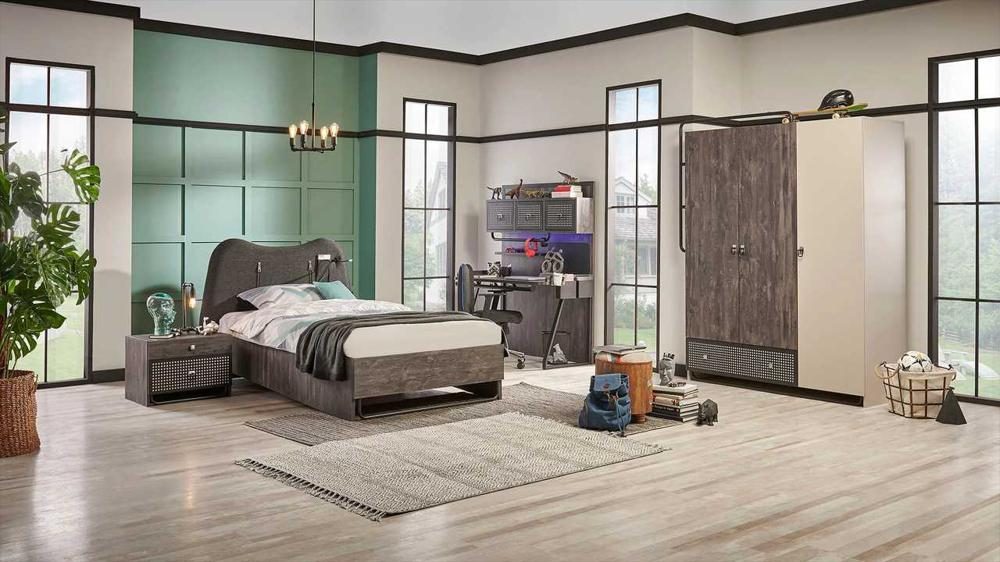
Color selection plays a crucial role in setting the room’s mood and can significantly impact a teenager’s emotional well-being. While bold colors can energize the space, it’s essential to balance them with neutral tones to create a cohesive look that won’t feel overwhelming. Navy blue, charcoal gray, and deep green are popular choices that offer sophistication while maintaining a masculine edge.
Consider using the 60-30-10 rule when applying colors: 60% of the room should be a dominant color (usually neutral), 30% should be a secondary color, and 10% should be an accent color. This approach ensures visual harmony while allowing for personal expression through smaller, easily changeable elements like accessories and artwork.
Related Guide: 14 Stunning Luxurious Bedrooms
3. Implementing Smart Storage Solutions
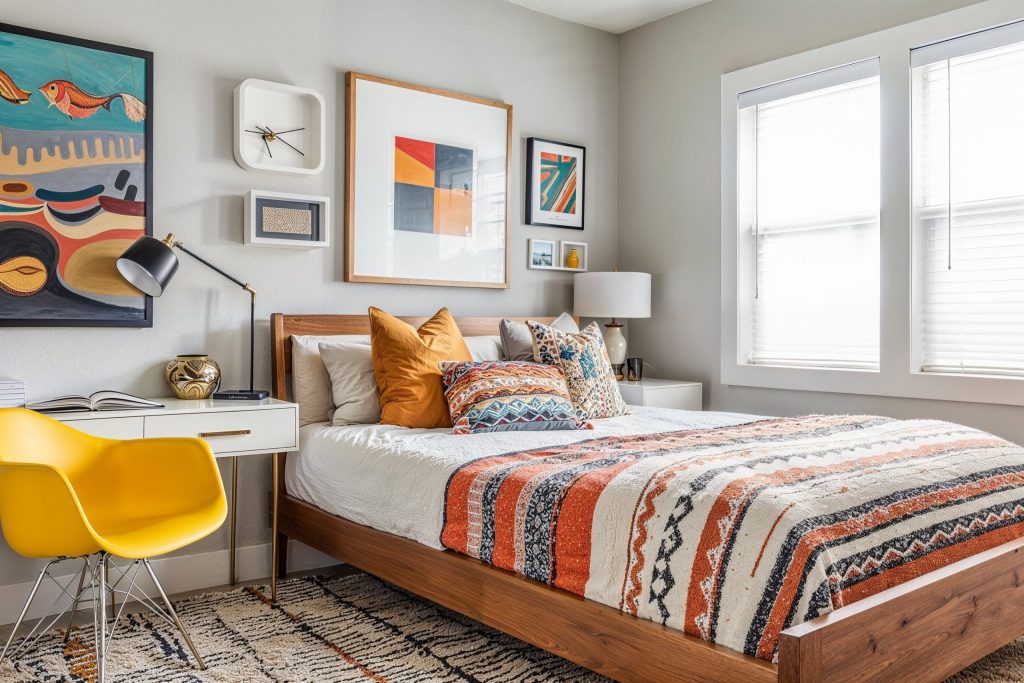
Storage is paramount in a teenage boy’s bedroom, as they typically accumulate various belongings from sports equipment to gaming gear. Install a combination of open and closed storage options to accommodate different items. Wall-mounted shelves can display trophies and collectibles, while built-in wardrobes or under-bed storage can house clothes and less frequently used items.
Vertical storage solutions are particularly valuable in maximizing space efficiency. Consider installing floating shelves at different heights, using over-door organizers, and incorporating multi-functional furniture pieces with built-in storage. Cable management solutions should also be implemented to keep electronic device charging stations organized.
4. Creating a Dedicated Study Space
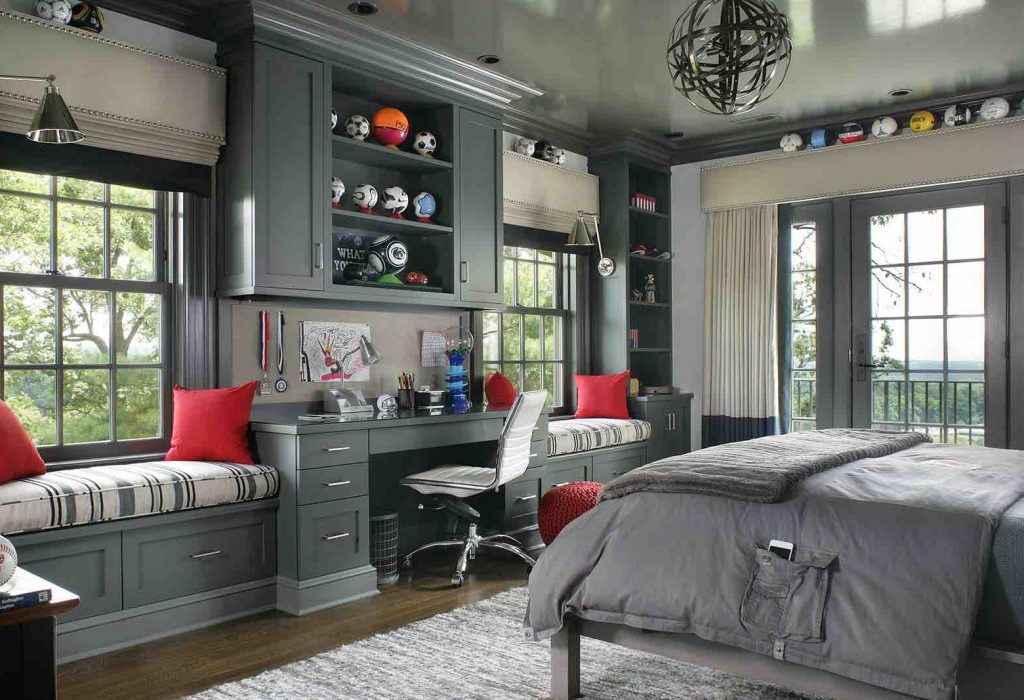
A well-designed study area is essential for academic success and should be treated as a priority in the room’s layout. The desk should be positioned to take advantage of natural light while minimizing glare on computer screens. Ensure there’s adequate task lighting for evening study sessions and consider installing a bulletin board or whiteboard for organizing schedules and reminders.
Creating an ergonomic workspace includes selecting an appropriate chair height and ensuring the desk surface is at the right level for comfortable typing and writing. The study area should also include proper cable management and easy access to power outlets for electronic devices.
5. Incorporating Personal Style Elements
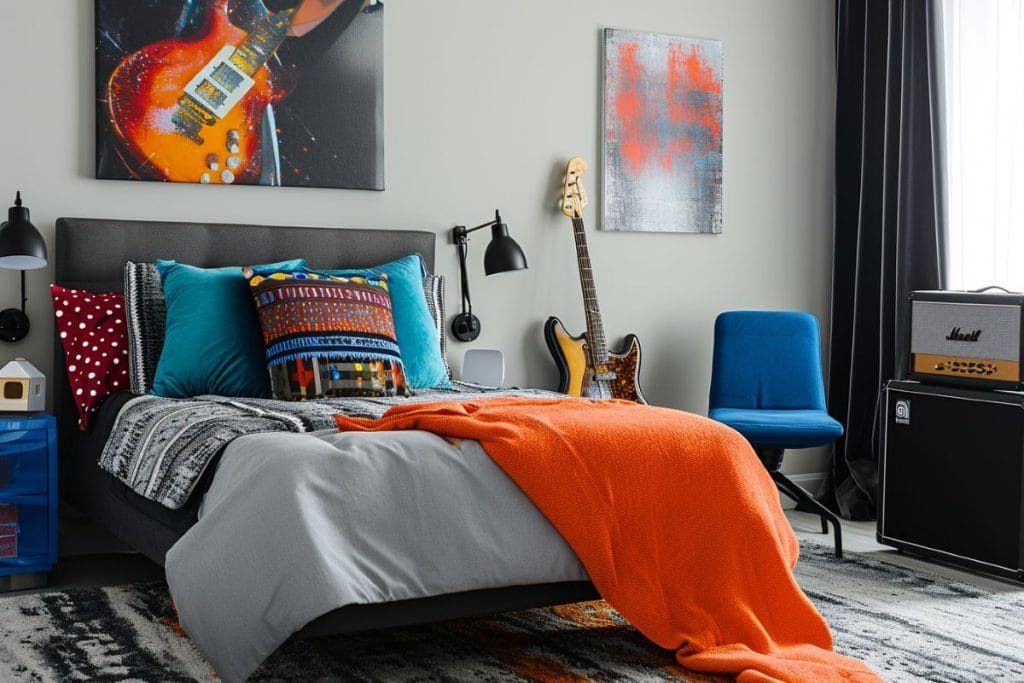
Personalization is key to making the space feel authentic and comfortable. Encourage self-expression through carefully chosen wall art, posters, or photo displays that reflect their interests and personalities. Consider creating a gallery wall where they can showcase their achievements, favorite memories, and artistic expressions.
The room should reflect their hobbies and interests while maintaining a cohesive design aesthetic. This might mean displaying sports memorabilia, gaming accessories, or musical instruments in a way that contributes to the overall design rather than creating visual clutter.
6. Selecting Appropriate Lighting
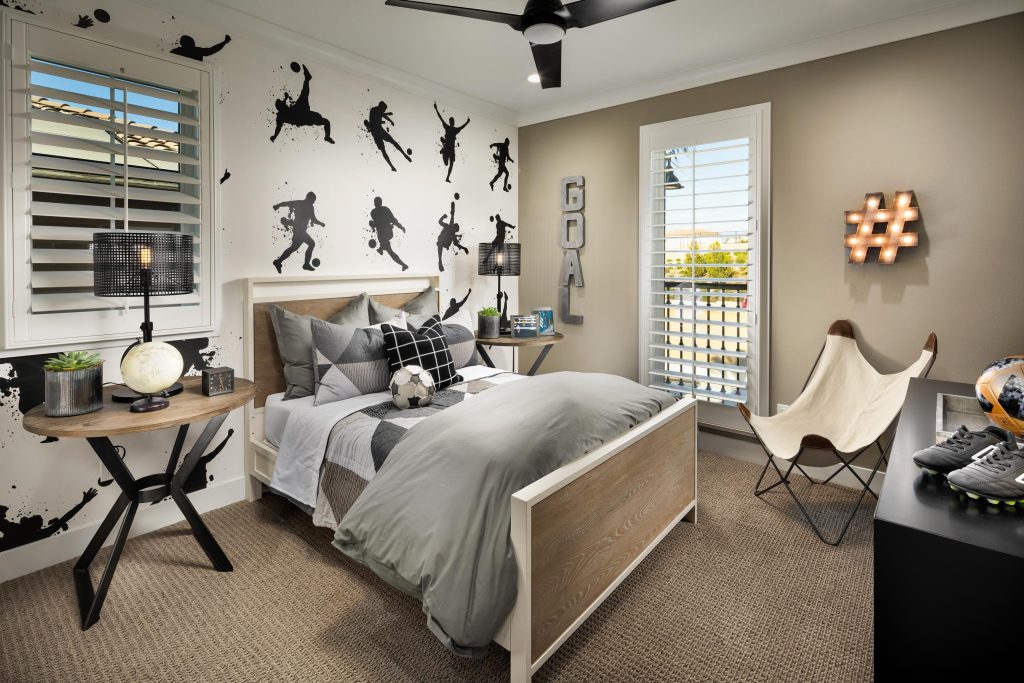
Proper lighting is crucial for creating different moods and supporting various activities. Layer the lighting with ambient, task, and accent lights to create a flexible lighting scheme. Include a desk lamp for studying, bedside lighting for reading, and perhaps some LED strip lighting for ambiance.
Consider installing dimmer switches to adjust light levels throughout the day and adding some decorative lighting elements that can serve as both functional light sources and style statements. Natural light should be maximized during the day while ensuring proper window coverings for privacy and light control.
7. Choosing the Right Bed and Bedding
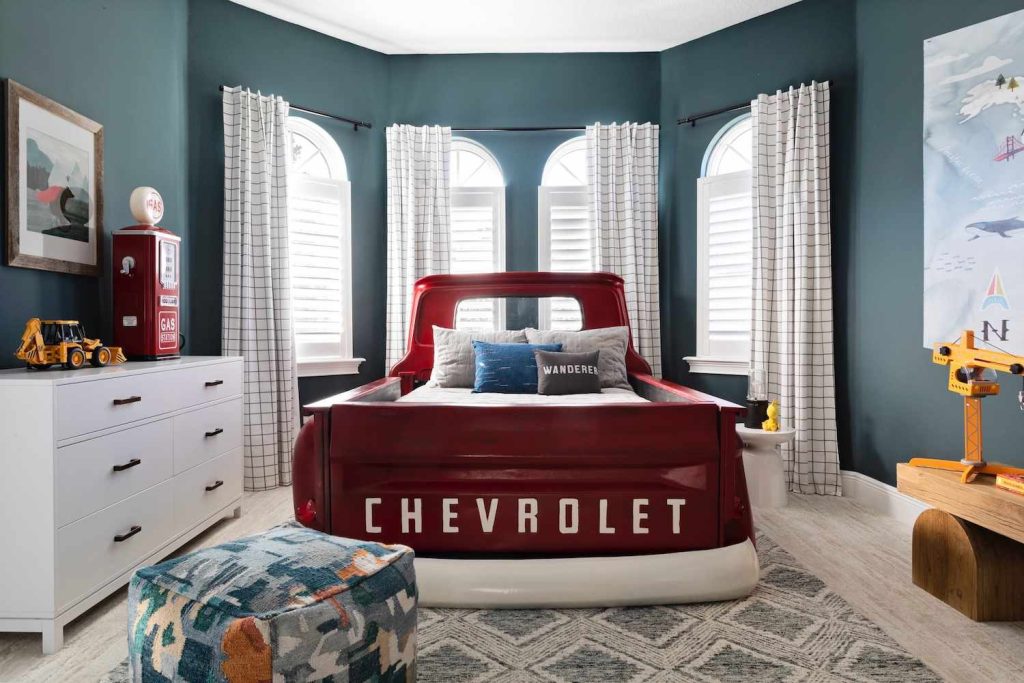
The bed is the centerpiece of the room and should be both comfortable and stylish. Select a size that’s appropriate for the room’s dimensions while considering future growth. Platform beds with storage drawers underneath can maximize space efficiency, while loft beds can create additional floor space beneath.
Invest in quality bedding that’s both durable and comfortable. Choose materials that are easy to clean and maintain, and consider having multiple bedding sets to allow for easy changes in the room’s look. Add layers of texture with throws and pillows to create a cozy, inviting space.
8. Adding Entertainment Features
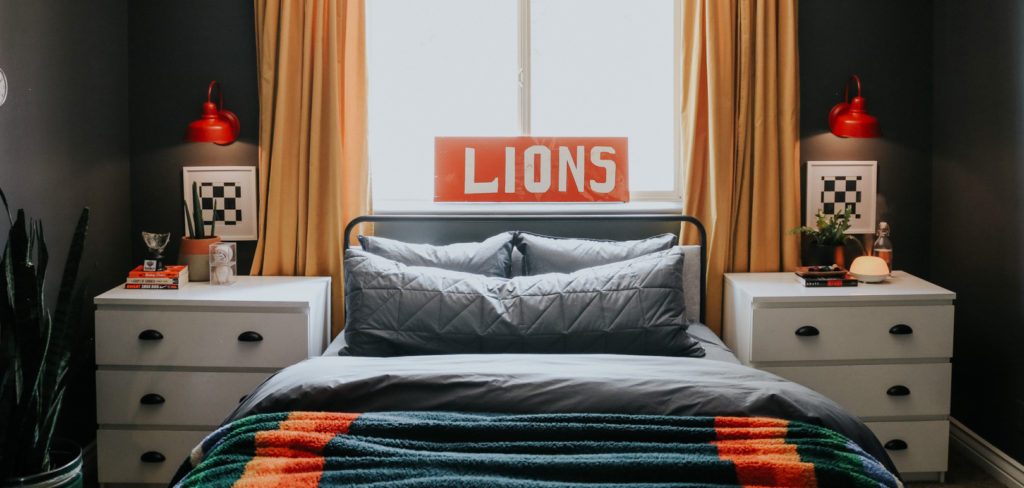
Modern teenage bedrooms often serve as entertainment spaces. Consider creating a designated area for gaming or music listening that doesn’t interfere with the study space. Install a wall-mounted TV at an appropriate viewing height and organize gaming consoles and equipment neatly.
Include comfortable seating options for friends, such as bean bags or floor cushions that can be easily stored when not in use. Consider acoustic treatments if music playing or gaming is a regular activity to minimize noise disturbance.
Related Guide: 16 Captivating Master Bedrooms
9. Incorporating Technology Integration
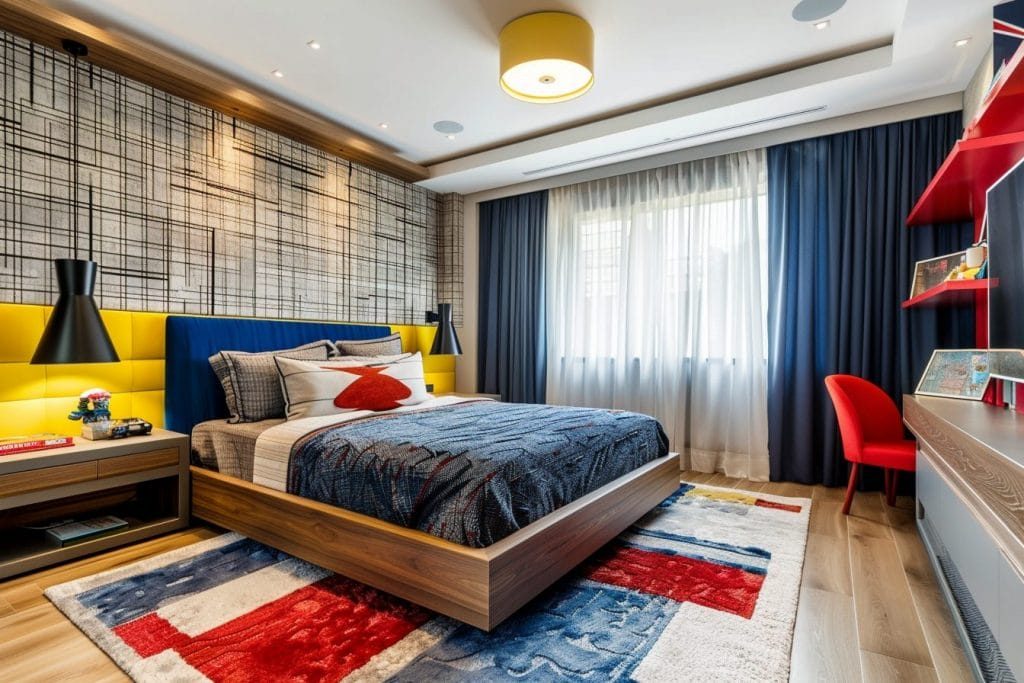
Today’s teenagers rely heavily on technology, so the room should be designed with this in mind. Create charging stations for various devices, ensure adequate electrical outlets are accessible, and consider installing USB ports for convenience.
Include proper cable management solutions to keep wires organized and out of sight. Consider future technology needs when planning the room’s layout and electrical requirements, making it easier to adapt to new devices and equipment.
10. Planning for Future Adaptability
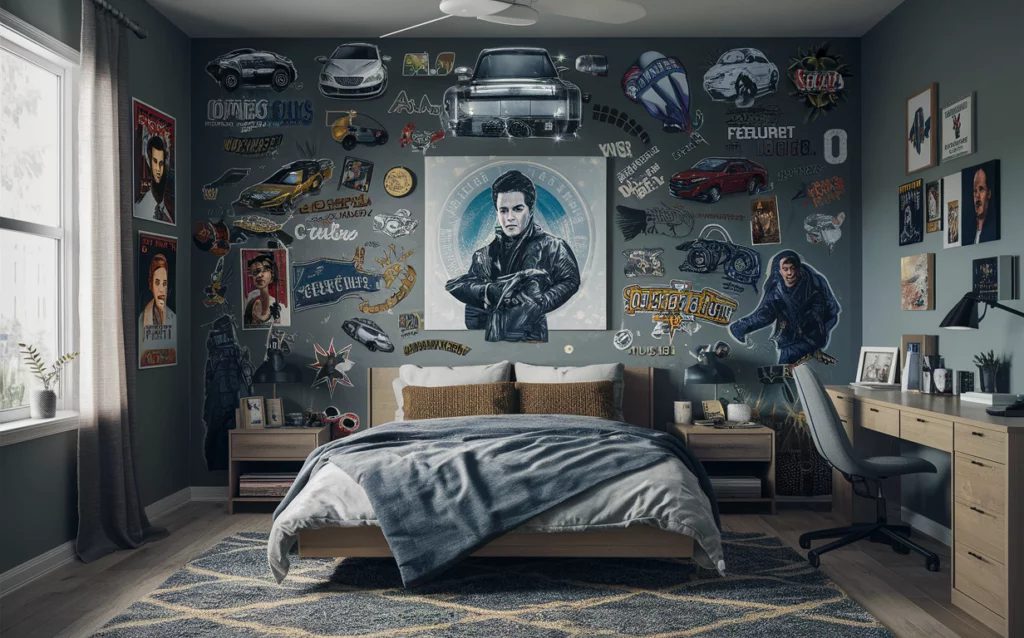
Design the room with flexibility in mind, allowing for easy updates as interests and needs change. Choose furniture pieces that can serve multiple purposes and be reconfigured as needed. Invest in quality basics that can transition through different style phases with simple updates to accessories and decor.
Consider modular furniture systems that can be rearranged or added to over time. Keep major elements neutral and timeless, allowing for personality to be expressed through easily changeable elements like artwork, bedding, and accessories.
Conclusion
Designing a teenage boy’s bedroom requires thoughtful planning and consideration of both current and future needs. By following these ten steps, you can create a space that serves as both a personal sanctuary and a functional environment for studying, socializing, and relaxation.
The key is to balance style with practicality, ensuring the room can grow and adapt with its occupant through the teenage years.
Remember that involving the teenager in the design process not only helps ensure the space meets their needs but also teaches valuable lessons about organization, design, and personal expression. With careful planning and attention to detail, you can create a bedroom that perfectly balances comfort, functionality, and style.

